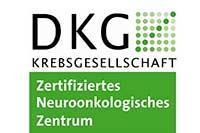About the disease
Acoustic (bilateral) neuroma is a benign tumor that develops in the auditory nerve, which is also called an acoustic nerve. The acoustic nerve is responsible for transmitting the acoustic information to the brain and it is located in the inner ear. The incidence rate of acoustic neuroma is two cases per 200,000 population. This tumor occupies 11 - 12% of all brain cancers. Generally the disease is more likely to appear among the individuals between 35 and 45 years. There has never been cases of acoustic neuroma among children and teenagers.
The cause of this condition is still unknown. Usually it appears absolutely suddenly without any gradual aggravation. Sometimes acoustic neuroma is a sign of neurofibroma, which is a genetic disease. Neurofibroma is an autosomal disorder of a dominant character. This implies that there is a genetic mutation in the chromosome, which can be passed from the parent to the child. If this mutated gene has been present in the system both parents, the child's likelihood to develop the disease is 50%.
There are three stages of this condition.
Stage first - tumor size does not exceed 1.9 - 2.7 cm. Usually the patient loses hearing in one ear.
Stage second - the tumor has the size dimension of a walnut. Symptoms at this stage are more pronounced. Due to the pressure on the stem of the brain the patient experiences impaired balance and coordination of movements.
Stage third - the size of the tumor reaches the size dimension of an egg.
Symptoms
- Gradual and slow hearing loss of the ear closest to the tumor, although sometimes it can occur suddenly
- Distant ringing in the ear of the affected side
- Dizzy and sluggish movements
- Violation of stability
- Partial or full numbness of the face(due to the disorder of the nerve responsible for facial features)
Diagnosis
- Hearing test is a diagnostic procedure of the acoustic(bilateral) neuroma that measures hearing in both ears
- Electronystagmography is a test, during which the cold and warm water are poured into the ear canal and the results of dizziness and of eye movements are recorded and analyzed
- Magnetic resonance imaging uses magnet waves to make clear pictures of the head
Treatment
- Radiation. There are several types of radiation therapy available at the doctor`s disposal. The most often used method is the stereotactic radiosurgery, also known as Gamma knife. This radiation is directed exactly on the location of the tumor. It does not require any big incisions and surgical interventions. During the irradiation position of the patient's head is fixed into a stereotactic frame. This procedure is conducted under the local anesthesia. During the course of radiation exposure the patient is patient is monitored by the voice as well as video surveillance of his condition. The process of irradiation is absolutely painless. Gamma Knife has a number of advantages over other methods of radioactive intervention. The goal of every radiation intervention is to stop tumor growth. In this respect the Gamma knife is a perfect solution. It has been successfully used for the irradiation of the remaining tumors which are left after the operation in the deep-seated places where the surgeon's knife can not reach without damaging healthy brain tissue. Gamma knife treatment can vary from 5 weeks to 12 months and even years, depending on the tumor size and effectiveness of the irradiation. The success of radiation therapy is regularly monitored and later analyzed by the computed tomography.
- Microsurgical resection aims to remove the neuroma, preserving the nerve responsible for facial features and prevent the hearing loss. Several days after operation the patient needs to be under observation in a hospital. The recovery period may last from 5 to 11 months. During this time the patient is checked in the hospital monthly.
Authors: Dr. Vadim Zhiliuk, Dr. Sergey Pashchenko




















